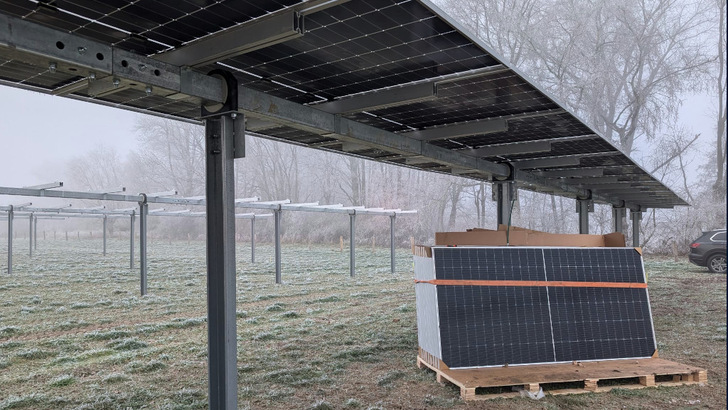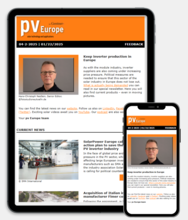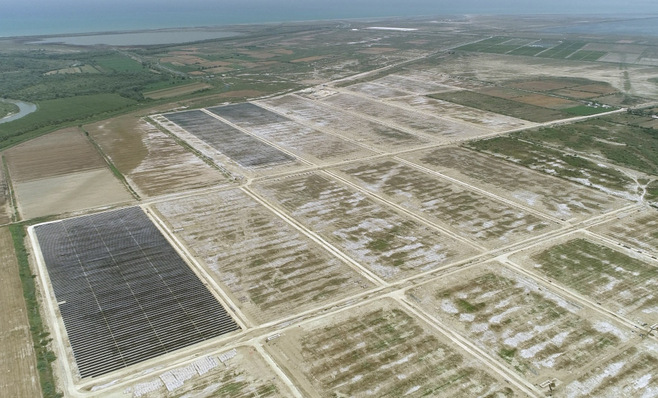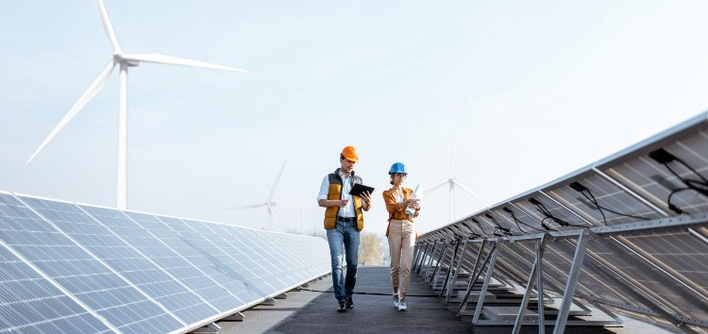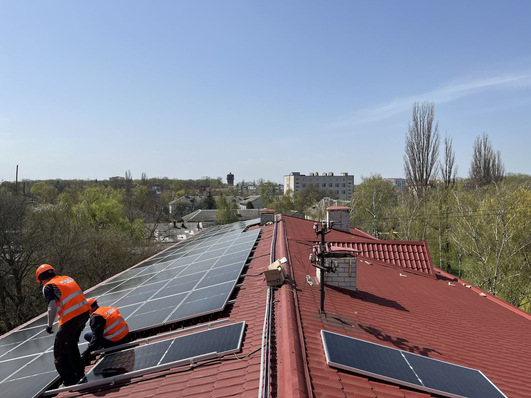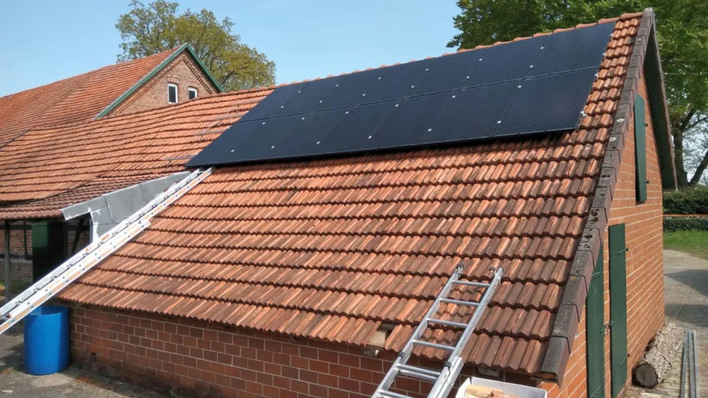The solar array on farmer Stefan Jatzkowsky's field in Bad Sassendorf in the west of Germany should be ready by spring. However, the construction of the tracker system with an installed capacity of 933 kilowatts is not done overnight. That is why the craftsmen from Gridparity wanted to start building the agri-PV system in the summer 2024.
Construction in a bird sanctuary
However, due to the protracted approval process for the elevated installation in a bird sanctuary, the start of construction was postponed until November 2024. The challenge was that the weather conditions became more difficult at this point. Heavy rain, snowfall, ice and strong winds made the work a real obstacle course. However, despite these unfavourable conditions, Gridparity managed to construct the plant on time by mid-January 2025.
Agri-PV: How to succeed on the path to regenerative and sustainable agriculture
Agriculture still possible
The system consists of trackers elevated at a height of 2.2 metres. The individual rows of trackers are each seven metres apart. This will allow agricultural use to continue almost without restriction. The farmer is only unable to cultivate one strip between the posts of the mounting system. However, this serves to improve biodiversity. This is because insects can colonise the area. It also provides shelter for birds.
How to activate agricultural areas to produce solar electricity? Download our special here!
High yield from the tracker
By using the tracker, the farmer can increase the system's yield to a whopping 1,248,000 kilowatt hours, which also benefits the sustainability of neighbouring farms. At the same time, farmer Stefan Jatzkowsky can show how small tracker systems close to the farm can be harmonised with different agricultural crops. The semi-transparent double-glazed modules used also ensure an improved microclimate under the solar installation.
Ioannis Chatzichristofis: “a key prerequisite is the modernization of the Polish electricity grid”
Scientific support
Among other things, the scientific monitoring of the project by Haus Düsse, which is located in the immediate vicinity in Bad Sassendorf, focuses on how this microclimate affects the growth of the plants. This is the experimental and training centre for agriculture in the German state of North Rhine-Westphalia in Bad Sassendorf. The researchers also want to find out which plants grow well under the modules. Various organic grain varieties, such as original spelt, are to be cultivated for this purpose. Haus Düsse already operates a small pilot plant with an output of around 17 kilowatts at the site, which is used for demonstration and research purposes. (su)

